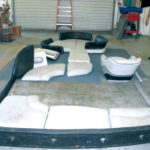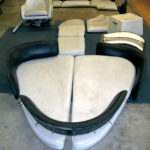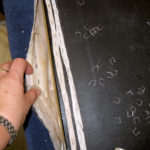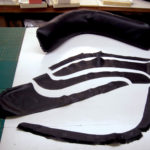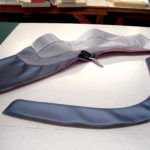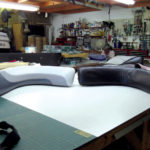Starting an upholstery job
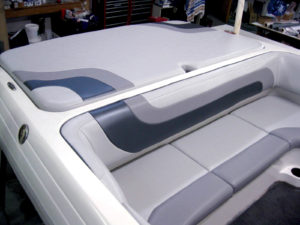
When planning your design, keep in mind that you want the lines of the upholstery to look like they have been well thought out from the beginning, not thrown in as an afterthought.
There are three types of customers. Those that have very specific ideas of what they want done; those that have no idea of what they want, so they look for us to recommend something; and those that just leave their boat at the shop and say “just do something—I know I’ll love it when you are done.” These are the nail biters for me.
While planning the project, you must consider many factors. Take a look at the outside of the boat. Are there any graphics that you can incorporate into the upholstery? Is there a name on the boat that may give you an idea? How is this customer going to use the boat? Chances are that a flame job isn’t going in a fishing boat, and a high-performance boat will require more than plain white cushions. Does the customer indicate that they want “hose and go” upholstery, or will they take the time to wipe down and maintain the upholstery? If the boat has already been reupholstered, you can use the internet to find out what it looked like from the factory.
Take note of the curves and cut outs. If there are sharp corners to pull material around, you will naturally want to use a product with a reasonable amount of stretch. If the boat has a huge sun pad that will take any abuse, use a vinyl that is reasonably scuff proof.
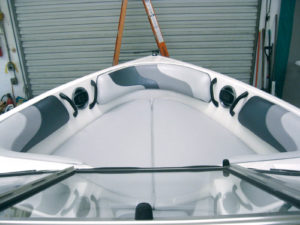
The completed bow on a 2002 Moomba.
Take time to really look at the lines of upholstery. Where are seams going to go and how will they line up with the next piece? If you intend to top stitch any of the pieces, make sure that the correct pieces are sewn in the correct order. Knowing where you are going to end is just as important as knowing where you are going to start.
When selecting the fabric, consider what kind of design, graphics or colors you intend to use. If possible, I like to stay with the same patterns or textures. The exception to this would be if I intend to make a certain color the point of interest. A few examples are carbon fiber, exotic and perforated patterns, and metallic finishes. These are fabrics where the general rule of “more is not better” applies. We all want to have a happy customer, and sometimes, as the professionals, we have to rein them in a bit.
Some graphics can be extremely time consuming, and trying to bid a flame job is certainly a great way to lose money. We have found the best way to charge for this custom work is to bid the job, but charge an additional hourly rate for the time we actually spend on the graphics work. We use a time clock that allows us to punch in and out of a job, but simply noting the time on a piece of paper is just as good.
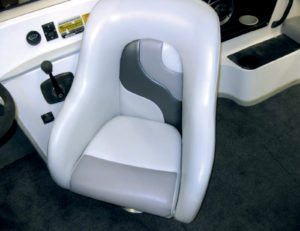
Keep the same theme throughout the entire project. In some cases it isn’t always practical due to small areas or cut out areas inside bolsters.
One of the absolute most important aspects of any upholstery job is the foundation, the foam that will support and show off your work. If the foam is bad, your efforts could be in vain. It’s important to get your customer to understand the benefits of new foam. I asked one of my suppliers to write up a spec sheet on foams for my customers to read. Generally speaking, customers have no clue about foam, other than it is too soft or it’s too hard or it’s decayed where the old vinyl is torn. It is up to us to explain to them what all the numbers and letters mean, and why we recommend one over the other. While price is always a factor, comfort can generally win the argument. One easy way to help customers choose a foam is to make several simple seat cushions using different types of foam. Let your customers sit on them and decide what is comfortable.
Some old foam can be steamed back to its original shape, but be aware that it is a temporary fix. Once the foam has been crushed inside a cushion for a number of years, it becomes weak and will want to return to that crushed shape in a short time.
Before the first staple is removed, take pictures—and lots of them. Take pictures of the upholstery before it is removed from the boat. Take pictures of each piece, front and back. No matter how good you think your memory is, there will be that one piece that just doesn’t make sense while you are sewing it together.
-
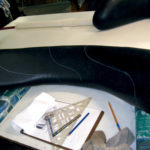
- Once a design has been selected, if the vinyl is still intact, draw it out before you remove the vinyl from the cushion.
-
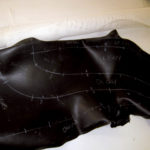
- Make sure that you mark your pattern with enough information. Color, seam allowances, sew foam, and in some cases the direction the patterns have to be placed on the material.
Carol Racine is owner of Racine Design in Jacksonville, Fla.
 TEXTILES.ORG
TEXTILES.ORG 


